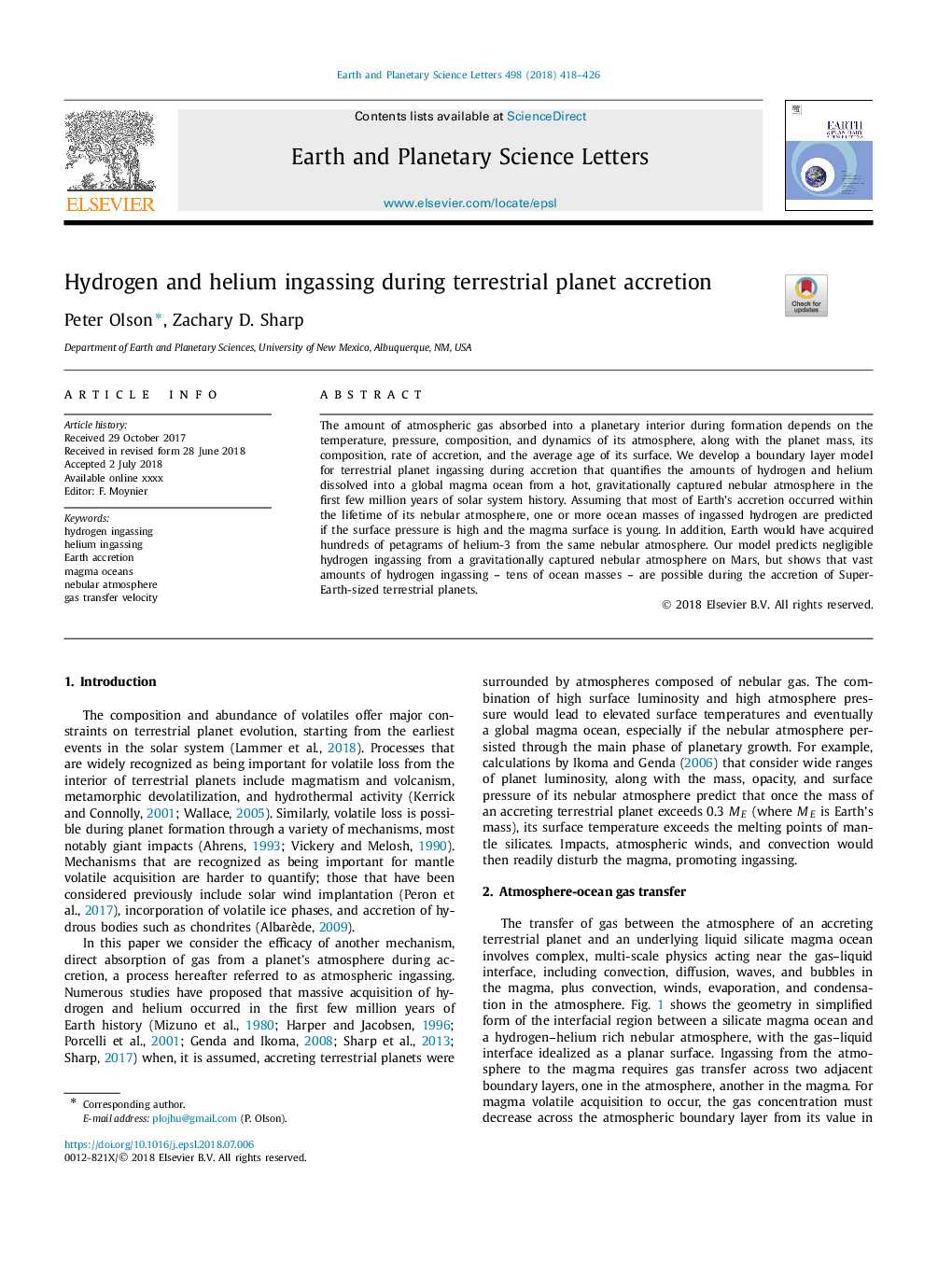| Article ID | Journal | Published Year | Pages | File Type |
|---|---|---|---|---|
| 8906736 | Earth and Planetary Science Letters | 2018 | 9 Pages |
Abstract
The amount of atmospheric gas absorbed into a planetary interior during formation depends on the temperature, pressure, composition, and dynamics of its atmosphere, along with the planet mass, its composition, rate of accretion, and the average age of its surface. We develop a boundary layer model for terrestrial planet ingassing during accretion that quantifies the amounts of hydrogen and helium dissolved into a global magma ocean from a hot, gravitationally captured nebular atmosphere in the first few million years of solar system history. Assuming that most of Earth's accretion occurred within the lifetime of its nebular atmosphere, one or more ocean masses of ingassed hydrogen are predicted if the surface pressure is high and the magma surface is young. In addition, Earth would have acquired hundreds of petagrams of helium-3 from the same nebular atmosphere. Our model predicts negligible hydrogen ingassing from a gravitationally captured nebular atmosphere on Mars, but shows that vast amounts of hydrogen ingassing - tens of ocean masses - are possible during the accretion of Super-Earth-sized terrestrial planets.
Related Topics
Physical Sciences and Engineering
Earth and Planetary Sciences
Earth and Planetary Sciences (General)
Authors
Peter Olson, Zachary D. Sharp,
